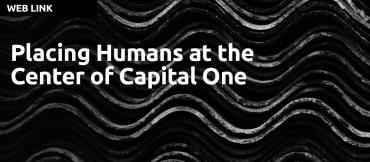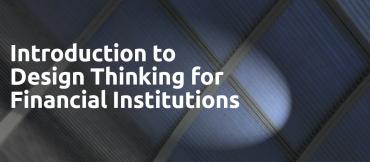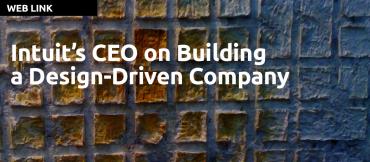
Design Thinking has been successfully used in the Finance Industry by corporations such as Intuit and the Government of Hong Kong. Read case studies on these corporations involvement with design thinking and other thought leadership articles about the use of design thinking in finance on this page.
Capital One’s CEO felt a sense of urgency that all of his employees be trained on the fundamentals of human centered-design. But how might one introduce Human Centered Design to one of the largest retail banks in the USA?
Read how the Brooklyn, NY boutique agency, Of Course, helped Capital One to successfully introduce Design Thinking and along with it a human centered focus for the staff at Capital One.
Why the Financial Services Sector Should Embrace Design Thinking. Financial institutions need to evolve rapidly or risk disruption at the hands of nimble Fintech start-up companies.
In this article Kunal Vaed, The Street, describes how E*Trade used design thinking to enable the company to help investors get smarter by going from the idea of investing to an investment in 5 minutes.
For any financial service provider, like MLP, customer proximity is the single most important aspect in daily business – especially as financial consultancy services require lots of trust. But with the hit of the financial crisis the perception of financial services changed drastically. For many people the financial sector is lacking transparency and being perceived as confusingly complex. As part of this development MLP had to acknowledge that also they had the task to explain their services and its USPs (Unique Selling Proposition) better.
Design Thinking has found many applications in the finance sector within financial institutions. It should not come as a surprise as financial institutions, like any other businesses, have to focus on the customer and their needs in order to succeed. They are also subject to the same disruption from digital technologies and the shift from physical to more virtual engagements with customers, faster ways of transacting, access to greater information and better investment tools that digital can offer.
Thanks to providers like Fidelity, people can rely on easy, convenient systems to stay on track with their retirement savings. But when it comes to saving for important near-term goals (think: vacation, house, or wedding), people tend to be less organized.
Fidelity Labs tackled this problem and defined the challenge as: "How might we improve the experience of saving for near-term goals? How might we make it easier, faster, and better?"
How to use design thinking to make great things actually happen by Tim Brown and Roger L. Martin. In this great HBR article, the authors look at design thinking in Finance with two case studies, one from MassMutual and the other from Intercorp. Group of Peru.
In this article highlighting the development of the acceptance of Design Thinking, they discuss how Design Thinking helps to create the artifact that creates the new solution as well as the intervention/s that brings the artifact to life.
The original version of Quicken offered only one-third the features that many competing products had, but with an important difference: It was well designed. Instead of looking like a spreadsheet, it displayed the familiar images of a check register and an individual check.
Because the design made using the product so intuitive, Quicken immediately became the market leader in personal finance software.
How design thinking’s user-centric approach is helping Hong Kong embrace a cashless future.
The world is rapidly moving towards a cash-lite society with the continuing global spread of the coronavirus disease, Covid-19, helping to accelerate the demand for digital payment services.
Many people have been not only adopting social distancing measures during the pandemic, but also trying to avoid contact with people through the use of bank notes and coins by choosing digital payment methods or shopping online. Except in Hong Kong...








